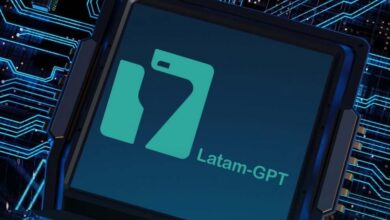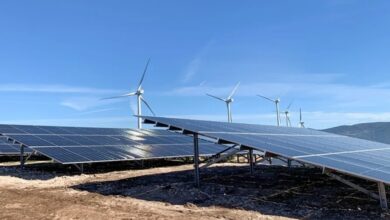The EU Pledged More than 45 Billion Euros for the Region: What Will they be Invested In?
Following the EU-CELAC summit, several projects in sustainable transport, renewable energies, and health systematization will see the green light. What will the 45 billion euros promised by the European Union be invested in?.

Photo: Adobe Stock
LatinAmerican Post | Santiago Gómez Hernández
Listen to this article
Leer en español: La UE prometió más de 45.000 millones de euros para la región: ¿En qué se invertirán?
On July 16, before the EU-CELAC (European Union-Community of Latin American and Caribbean States) summit held in Brussels (Belgium), Ursula von der Leyen, President of the European Commission, revealed that the European Union will allocate an investment of more than 45 billion euros to Latin America and the Caribbean through Europe's Global Gateway program.
"More than 135 projects are already on the starting line, from clean hydrogen to critical raw materials, from the expansion of high-performance data cable networks to the production of the most advanced RNA vaccines," Von der Leyen said during a roundtable discussion with some political and business leaders.
What is the Global Gateway?
As explained by the European Commission, the Global Gateway is a European strategy led by the European Commission and the High Representative of the European Union, which seeks to "boost smart, clean and secure links in the digital, energy and transport sectors, as well as to enhance health, education and research systems worldwide."
Thus, from 2021 to 2027, Team Europe, comprised of EU institutions and Member States, committed to mobilizing an investment of up to 300 billion euros in sustainable, high-quality projects in emerging areas such as Latin America, the Caribbean, and Africa. "This initiative takes into account the needs of partner countries and seeks to ensure lasting benefits for local communities," adds the European Commission.
What Projects will you Sponsor?
- Clean Energies
One of the most essential megaprojects to be sponsored by the European Commission is related to promoting renewable energies in the Latin American subcontinent. Thus, according to Von der Leyen, the EU sees work with elements such as clean hydrogen and the critical raw materials industry as an area of great potential.
However, in contrast to other foreign investors, the EU is looking to partner with the region to build processing capabilities rather than investing in the extraction of raw materials. The intention is to manufacture batteries and end products such as electric vehicles. Von der Leyen emphasized that the EU can support its investment with cutting-edge technology and high-quality training for local workers.
In addition, for the president of this organization, the next natural step is to transform clean energies such as wind and solar into pure hydrogen, which could be exported and used in industries such as steel, cement, and clean transportation, all produced in Latin America and the Caribbean.
- Strengthening of Health Technologies
The EU-CELAC summit also represented a boost for health in the Latin American region, thanks to the cooperation agreement for almost 4 million euros to improve access to health technology in the region. This was explained by Jutta Urpilainen, EU Commissioner for International Partnerships, and Dr. James Fitzgerald, Director of Health Systems and Services of the Pan American Health Organization (PAHO).
"I am proud that we are strengthening cooperation to promote the health and well-being of people in both regions, together with our PAHO partners in Latin America and the Caribbean, and in line with the EU-LAC partnership on health presented last year," Urpilainen said.
Among the diseases that can be fought more effectively with this intercontinental partnership are COVID-19, malaria, yellow fever, tuberculosis, and HIV/AIDS.
It may interest you: Guatemala: Chapina Democracy Survives Despite its Weaknesses
What Other Projects do you Have?
Other projects with key countries in the region are also on the list, aimed at strengthening areas of significant social impact, such as technological modernization and transportation. Among the projects highlighted are the exploration and development of critical raw materials, such as lithium in Argentina and Chile, which are fundamental for the high-tech and renewable energy industries.
In addition, the EU will support the expansion of telecommunications networks in Brazil's Amazon region, which aims to improve connectivity in remote areas and promote access to digital information and services.
Costa Rica will benefit from the support of the European Commission for the electrification of public transportation, thus promoting the transition to more sustainable and cleaner options in urban mobility.
The same sentiment is being sought to become a reality in Colombia. European collaboration will focus on constructing a subway line, a crucial initiative to improve mobility and reduce congestion in the South American country.
Meanwhile, Jamaica will receive support for deploying a 5G network, which will enable faster and more efficient broadband access throughout the country, boosting digital and technological development. Finally, Paraguay will receive EU assistance in the modernization of its electricity grid to improve the efficiency and stability of its energy system.
Thus, these projects represent a strong EU commitment to the development and progress of Latin America and the Caribbean, fostering regional cooperation and adopting innovative solutions to address critical challenges in infrastructure, clean energy, transportation, technology, and education. The strategic collaboration between the two regions promises to generate significant benefits for their citizens and further strengthen ties between the two continents.




